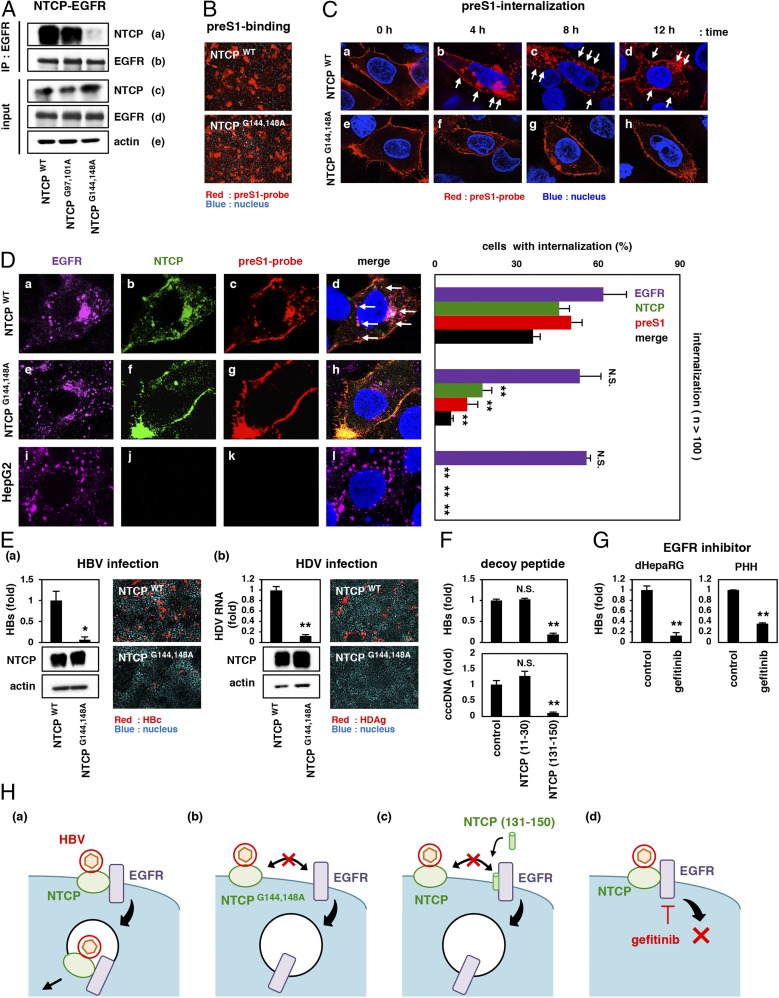Fig. 4.
Functional interaction with EGFR is required for NTCP’s ability to mediate viral infection. (A) 293T cells overproducing EGFR and either NTCPWT, NTCPG97,101A, or NTCPG144,148A were lysed and immunoprecipitated with an anti-EGFR antibody (IP: EGFR) or were recovered without immunoprecipitation (input). NTCP, EGFR, and actin were detected. (B and C) Huh7 (B) or HepG2 (C) cells overexpressing either NTCPWT or NTCPG144,148A were examined for preS1 attachment (B) as well as preS1 internalization at the indicated time points (C) as in Fig. 2 E and F. The white arrows show internalized preS1 vesicles in C. (D) EGFR (purple), NTCP (green), preS1-probe (red), and the nucleus (blue) were detected in HepG2-NTCPWT, HepG2-NTCPG144,148A, and HepG2 cells after 30 min of EGF stimulation. White arrows indicate the colocalization of preS1, NTCP, and EGFR (Left, d). The percentages of cells showing the internalization of preS1, NTCP, and EGFR are indicated on the graph (Right). (E, a and b) HepG2-NTCPWT and HepG2-NTCPG144,148A cells (a) as well as Huh7-NTCPWT and Huh7-NTCPG144,148A cells (b) were used for the infection assays with HBV and HDV, respectively, as in Fig. 1. (F and G) HBV infection assay using HepG2-NTCP (F) and dHepaRG cells and PHH (G) upon treatment with or without the indicated compounds [NTCP (11–30) or NTCP (131–150) in F; gefitinib in G]. HBs levels (F and G) and cccDNA levels (F) were detected to evaluate HBV infection. (H, a–d) Proposed model for HBV–NTCP–EGFR internalization. HBV attaches to NTCP on the cell surface and is recruited to the NTCP–EGFR complex, which dynamically translocates from the cell surface to the intramembrane vesicles for viral internalization (a). Dissociation of the NTCP–EGFR interaction either by introducing point mutations in NTCP (b), by binding competition with a decoy peptide (c), or by functional inactivation of EGFR (d), deprives NTCP of the ability to support HBV infection. Thus, EGFR plays a critical role in mediating the entry process after HBV–NTCP attachment. **P < 0.01; *P < 0.05. N.S., not significant.

